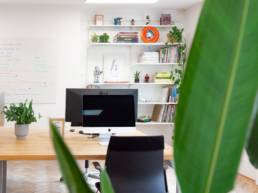OtherSpace, our shared workspace in Tunbridge Wells was created with the intention to bring creative minds into our workspace create a collaborative workspace that encourages productivity whilst also inspiring creativity and collaboration. We created OtherSpace to help those people adapting to this new hybrid workplace model.

The COVID-19 pandemic constructed new ways of working. Namely, the “hybrid workplace model,” which refers to a type of work environment that combines aspects of remote working and in-office working. Whichever way it may be organised, the aim of a hybrid workplace is to balance the wants and needs of individual employees with their potential to collaborate and be productive in a shared workspace.
As COVID-19 has turned the way we work upside down, companies and businesses have been forced to adapt their physical workspace. Workers preferences and concerns have evolved over the last year. Many are reluctant to go back to the office, while others simply can’t wait to get back into a shared workspace. Most people agree that the 9-to-5 grind isn’t conducive to productivity and that a more adaptable approach must be taken.

Even prior to the pandemic, workers increasingly appreciated flexibility in their workspace. Having the independence of being able to choose where and when they work is more significant than salary for 9 out of 10 millennials. This conveys a developing mentality of how people think about work and where they do it, however this is not true for younger employees.
Gen Z will soon be the dominant portion of the working population and they demonstrate a desire to not work solely from home but to divide their working time between home and an office. Especially for workers at the beginning of their career, the office is much more valued. It is viewed as a space to socialise, network and collaborate. Deciding how often to be in the office is still important to Gen Z but data suggests that Gen Z are less interested in working from home than millennials.
This shift in preference toward the hybrid workplace and away from fully remote working can be explained by a few factors. On average, we’re each better equipped to work from anywhere there’s a power outlet and a decent Wi-Fi connection. Cloud-based software has made collaboration possible and reliable over any distance. And we increasingly pay attention to our work-life balance, shaping our professional schedules to fit around our personal lives, rather than the other way around.

In a hybrid environment, the benefits of flexible working go side by side with the benefits of having a physical workspace. The COVID-19 pandemic has accelerated an already existing trend, demonstrating that a dispersed workforce is achievable, but it also emphasised a few of the drawbacks of a solely remote working model. Workers – particularly those who are just starting out – now want the best of both worlds.
The key principles of the hybrid workplace empower employees to do their best work regardless of where they are. OtherSpace provides an adaptable shared workspace that support your business goals. A dedicated desk will help remote workers feel more connected to their colleagues in the office. A distraction-free setting, modern meeting rooms, high-speed Wi-Fi, and business-class facilities give your team members the tools they need to stay productive, engaged, and collaborative, no matter the distance.

